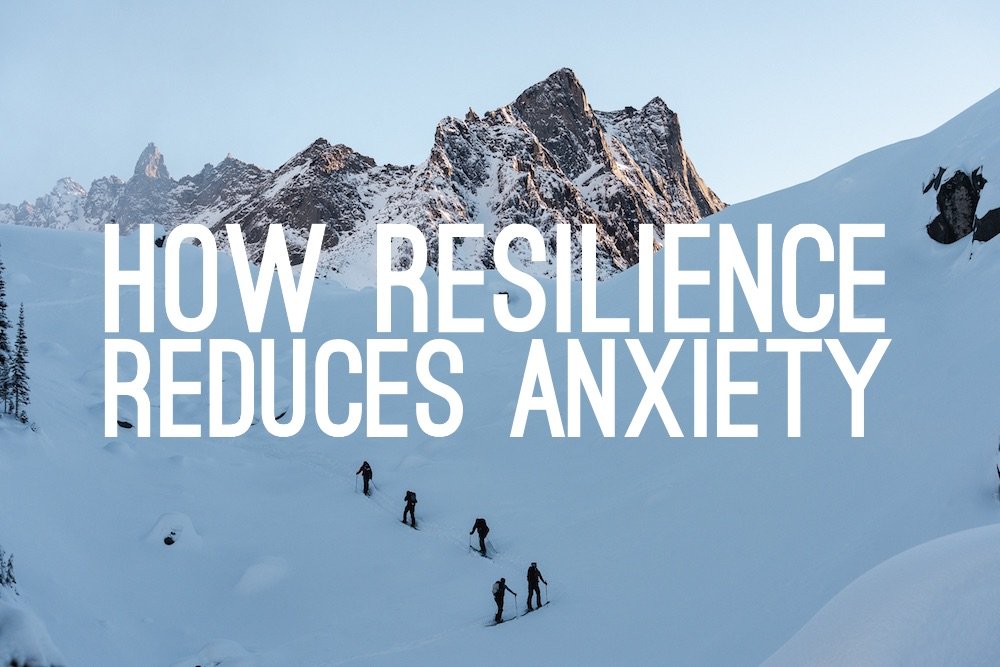How Resilience Reduces Anxiety
Anxiety can feel like a constant, unwelcome inner voice that amplifies our worries and leaves us on edge. When you experience excessive anxiety, it’s only natural to want to pull back from the anxiety-inducing stressor.
Although this is a normal response, it might not be helping you.
In this month’s post:
Anxiety-Stress Link: Anxiety stems from stress and worsens when we fear the fear itself.
Avoidance Amplifies Anxiety: Avoiding stress lowers your resilience and tolerance for anxiety.
Exposure Builds Resilience: Gradually facing fears makes you more resilient and reduces anxiety.
Resilience is Learnable: Learning to embrace stress strengthens anxiety management.
Stress as a Catalyst: Discomfort fuels personal growth.
(4-minute read!)
What if the key to managing anxiety lies not in avoiding stress but in embracing it?
This counterintuitive approach could be the thing that helps you build resilience and reclaim control over your mental well-being.
The Connection Between Anxiety and Stress
Anxiety is closely linked to your stress response. At its core, anxiety stems from worrying about things that stress you out.
For most people, becoming aware of their anxiety and its triggers can lead to a new layer of distress: worrying about worry.
This phenomenon, often referred to as “fear of fear,” creates a cycle where anxiety perpetuates itself.
For example, individuals who learn to recognize anxiety often find themselves anticipating it. They start to dread situations where they might feel anxious, which ironically exacerbates their anxiety. Depending on the duration leading up to a stressful event, dwelling on imagined consequences causes them to spiral.
This feedback loop can feel overwhelming, but understanding its mechanics is the first step toward breaking free.
The Problem with Avoidance
When faced with stress, our instinct is often to avoid the source of discomfort. Unfortunately, pulling back from discomfort gives you a sense of relief, reinforcing behaviour that causes us to avoid future stress. When we pull back, the thought processes and beliefs that feed anxiety remain unchanged.
Procrastination is an unusual culprit that illustrates this process, whereby putting off a daunting task provides temporary relief but contributes to a spike in anxiety as a deadline approaches. If you’ve ever procrastinated, you know the surge of anxiety that builds as a deadline looms closer. While you might justify distractions and delay a project by telling yourself you “work well under pressure,” the reality is that this habit only reinforces your stress response.
But avoidance doesn’t just delay the inevitable—it reduces your overall tolerance for stress. Every time you deviate from a stressful situation, it lowers the bar for what you can handle.
Over time, even minor challenges can start to feel insurmountable. This cycle keeps the fear intact or even magnifies it, making anxiety harder to manage.
Breaking the Cycle with Exposure
So, how do you interrupt this self-perpetuating cycle of anxiety and avoidance?
The answer lies in exposure.
Gradual exposure is a powerful technique that involves intentionally facing stressors in a controlled, manageable way. By confronting fears or stressors step by step, you can systematically desensitize yourself to them. This process helps increase your stress tolerance and builds resilience over time.
You can combat the fear of public speaking by speaking in front of a small, supportive group before moving on to larger audiences.
You can tackle the fear of failure by setting small, achievable goals with a low risk of failure, then progressively tackle more ambitious challenges.
You can defeat social anxiety by engaging in low-pressure conversations and working up to more complex social interactions.
Lean into discomfort, even when your instinct is to pull away.
Each small victory reinforces your ability to cope, rewiring your brain to associate stress with growth instead of threat.
A Quote:
“The only thing we have to fear is fear itself.”
- Franklin D. Roosevelt
A Thought:
Resilience isn't about eliminating stress or anxiety; it's about embracing stressors as opportunities to build the strength to navigate life confidently.
Building Resilience to Stress
Resilience isn’t just a trait you’re born with; it’s a skill you can develop. By deliberately increasing your exposure to stress, you’re training your mind and body to handle adversity with less resistance.
This process doesn’t just alleviate anxiety in the short term; it equips you with the tools to face future challenges with confidence.
Finding Comfort in Discomfort
It may feel unnatural at first to embrace stress rather than avoid it. But as you gradually increase your exposure to challenges and experiences that trigger your stress response, you’ll discover that your tolerance for anxiety grows alongside your resilience.
Stress is no longer something to fear—it’s a catalyst for personal growth. And we must embrace stressors that put us at the edge of our comfort zone. If you didn’t read my last post on this topic, Boost Your Resilience Quotient, I think you should because getting comfortable with being uncomfortable and learning to regulate your stress response increases your resilience.
Resilience is not about eliminating stress or anxiety.
It’s about learning to navigate life’s challenges with strength and adaptability. By building your resilience, you’re not just reducing anxiety—you’re enhancing your overall well-being.
I hope you enjoyed this month's post. Please share this with anyone needing a boost when facing stressful situations.
With gratitude,
Mike Shaw
Reference:
Young, M. E. (2021). Learning the art of helping: Building blocks and techniques (Seventh edition). Pearson.

